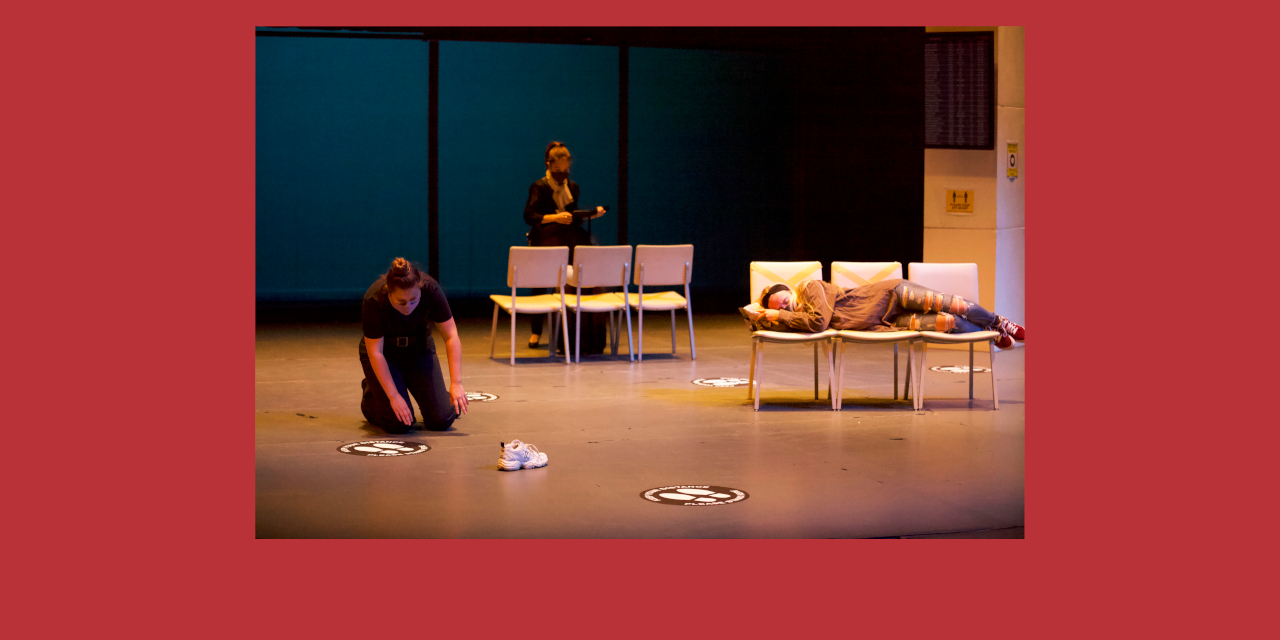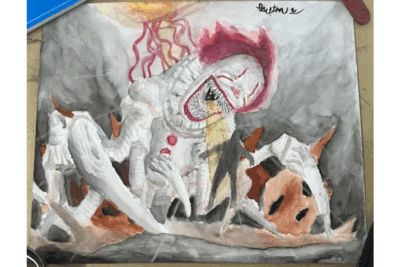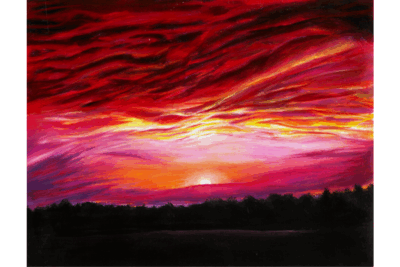The Goshen College Theater Department presented its first program of the 2020-2021 theater season this past weekend as a part of Goshen College’s virtual Homecoming Weekend.
A livestreamed production of “Peace, Play, Pandemic: A Virtual Theater Experience” revisited the winning works of the 2008 and 1984 Goshen College Peace Play Contests: Here to Serve You by Barbara Lindsay and After the First Death by Richard Stayton.Here to Serve You was presented as a stage performance, while After the First Death was presented in a split-screen Zoom format. Both plays were pre-recorded.
In order for the productions to take place, the theater department adopted certain COVID-19 safety precautions and regulations.
Annika Fisher, a first-year sociology and art major who played the role of Ted in Here to Serve You, described the experience as “fairly normal, all things considered,” but added that “almost every aspect of the show was affected slightly by COVID-19 restrictions.”
“At in-person rehearsals, we kept six feet of space between cast members and, of course, wore masks,” she said. “We also tried to keep rehearsals down to about an hour so we weren’t breathing each other’s air for too long, and we had the opportunity to step outside and take off our masks or just get a breath of fresh air during the rehearsal process if we wanted to.”
COVID-19 regulations were incorporated as part of the production, making them “an artistic choice,” said Bek Zehr, a fourth-year music and theater major and set designer for the production.
“You have to play into that,” they said. “It kind of makes you accept that these are the restrictions, and we’re working with it. We’re still making something out of it.”
In addition to working with COVID-19 safety precautions, the cast, crew and directors of the two productions had to learn how to create a theatrical experience for an entirely virtual audience, a challenge that Phil Weaver-Stoesz, director of After the First Death, described as “symphonic chaos.”
“The Zoom performance itself was recorded, then played back for performance times,” he said. “Coordinating the performance was a work of logistic art from the student stage managers, actors and designers. At one point, [stage manager] Madeline Kauffman was on headset communication, phone communication, Zoom communication and real-time communication — all coordinating everyone’s roles.”
Zehr compared the preparation for After the First Death to setting up a film set.
“We had to set up film spaces with devices and line out how much of the wall and the floor you could see,” they said. “That [required] a lot of coordination between all the design [elements].”
“Peace, Play, Pandemic: A Virtual Theater Experience” demonstrates the role that technology can play in the accessibility of theater during the COVID-19 pandemic.
As the theater department prepares to present Cymbeline in an online format, it seems unlikely that theater will be happening in-person for quite some time.
“The most powerful aspect of live performance, the physical live-ness of it, has been taken away because of the virus,” Weaver-Stoesz said. “We cannot pretend online theater is the same as physical theater.”
Though the COVID-19 pandemic has severely impacted the performing arts and the livelihoods of many artists, Weaver-Stoesz is confident that theater will continue to find ways to adapt to and grow from changing circumstances.
“What remains as theater-makers is [our] ability to notice what’s meaningful, the presence to work together to tell a story and the rigor to dig to the root of why we make art at all,” he said.
“In 20 years, we can call this history, but right now, we call it reality. So artists, keep making! Make, make, make! That’s how we survive.”




